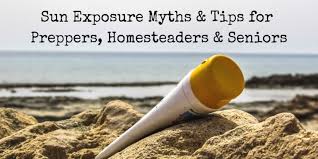
Breaking News
 New Drone Rules Will Pave the Way for Starbucks and Amazon Deliveries
New Drone Rules Will Pave the Way for Starbucks and Amazon Deliveries
 Grand Theft World Podcast 247 | LICENSE TO GENOCIDE with guest Scott Horton
Grand Theft World Podcast 247 | LICENSE TO GENOCIDE with guest Scott Horton
 The Collapse of Britain's National Health Service
The Collapse of Britain's National Health Service
 BREAKING: CONGRESS MOVES TO NULLIFY BIDEN'S PROTECTION OF FAUCI, MILLEY, SCHIFF...
BREAKING: CONGRESS MOVES TO NULLIFY BIDEN'S PROTECTION OF FAUCI, MILLEY, SCHIFF...
Top Tech News
 Chinese Scientists Produce 'Impossible' Steel to Line Nuclear Fusion Reactors in Major Break
Chinese Scientists Produce 'Impossible' Steel to Line Nuclear Fusion Reactors in Major Break
 1,000 miles: EV range world record demolished ... by a pickup truck
1,000 miles: EV range world record demolished ... by a pickup truck
 Fermented Stevia Extract Kills Pancreatic Cancer Cells In Lab Tests
Fermented Stevia Extract Kills Pancreatic Cancer Cells In Lab Tests
 3D printing set to slash nuclear plant build times & costs
3D printing set to slash nuclear plant build times & costs
 You can design the wheels for NASA's next moon vehicle with the 'Rock and Roll Challenge
You can design the wheels for NASA's next moon vehicle with the 'Rock and Roll Challenge
 'Robot skin' beats human reflexes, transforms grip with fabric-powered touch
'Robot skin' beats human reflexes, transforms grip with fabric-powered touch
 World's first nuclear fusion plant being built in US to power Microsoft data centers
World's first nuclear fusion plant being built in US to power Microsoft data centers
 The mitochondria are more than just the "powerhouse of the cell" – they initiate immune...
The mitochondria are more than just the "powerhouse of the cell" – they initiate immune...
 Historic Aviation Engine Advance to Unlock Hypersonic Mach 10 Planes
Historic Aviation Engine Advance to Unlock Hypersonic Mach 10 Planes
 OpenAI CEO Sam Altman Pitches Eyeball-Scanning World ID to Bankers
OpenAI CEO Sam Altman Pitches Eyeball-Scanning World ID to Bankers
Sun Exposure Myths & Tips for Preppers, Homesteaders & Seniors

This article will discuss some of the most common sun exposure and sunscreen myths. We'll get into how sun protection applies in particularly important ways for preppers and homesteaders. We'll also talk about tips for preventing sunscreen, and some sunscreen alternatives you can whip up in a pinch. Lastly, we'll discuss some special considerations when it comes to sun protection for seniors, disabled folks, and people with limited mobility. Let's dive right in with some myths to get started!
Myth 1: People with dark skin can't get sun damage
Melanin, which gives skin its dark color, does provide protection from the sun—but it doesn't make it impossible for the sun to damage the skin. Worse yet, darker skin makes it harder to identify when a sunburn is occurring, so olive and darker-complexioned people can be lulled into a false sense of security by thinking the damage isn't occurring.
Myth 2: Overcast skies and the winter season keep you from getting damaged
Unfortunately, sunburns and sun damage, in general, can still occur when the sky is overcast. Likewise, you can get sun damage during the winter. Sunscreen should be worn year-round.
Myth 3: Your skin isn't damaged until you get a sunburn.
The fact of the matter is, if you have a tan, your skin has been damaged. Tanning is a physical response to sun damage. So, even if you don't get burned, the "healthy tan" isn't so healthy after all. A tan is specifically a response to the skin cells becoming damaged.
Myth 4: You need to get sun exposure or you'll be Vitamin D deficient.
Thy myth is easy to fall prey to. Vitamin D is important, but incidental sun exposure usually keeps your body producing enough of it. Along with incidental exposure, foods like egg yolks give you all the vitamin D you need.
Myth 5: The more sun exposure, the more vitamin D you get.
Many sunbathers think "oof, I got a little sunburned. Well, at least I got my Vitamin D!" However, after about 20 minutes in direct sun, you actually begin having a negative effect in terms of what would have been the benefits from sun exposure. The window of sun exposure is very short before skin damage starts to occur.



